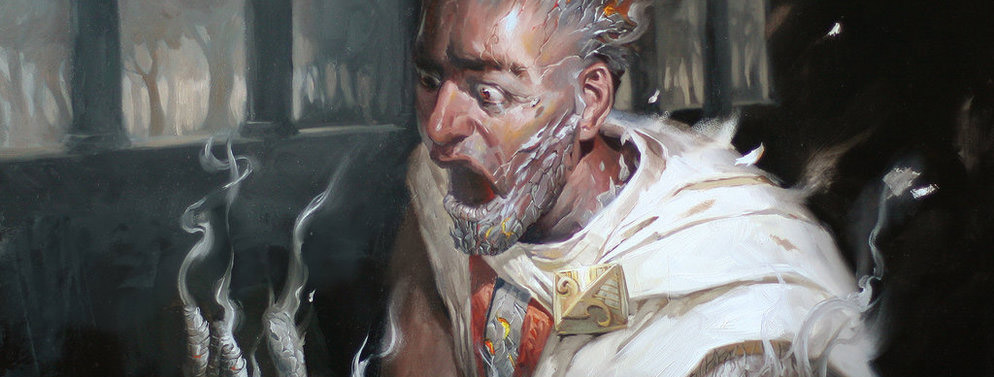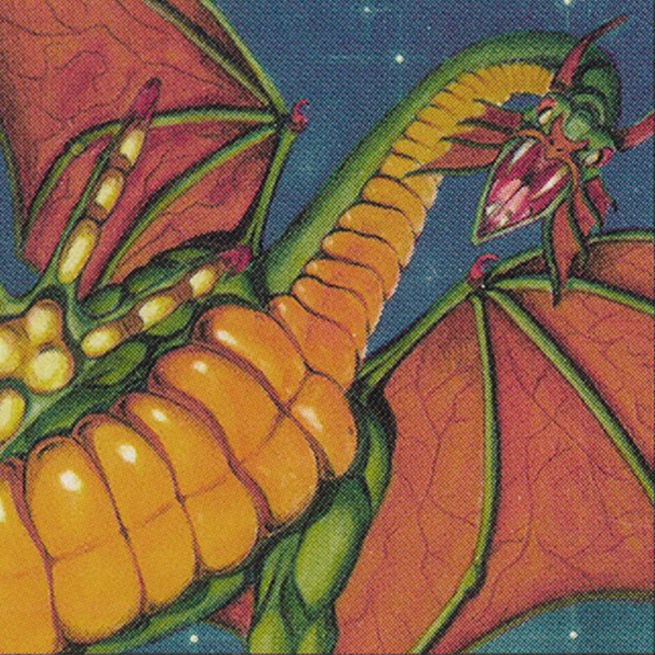Welcome to our artists interview series - There's no Magic without art -, where we talk to artists about their work on Magic: the Gathering.
Today we share with you our interview with Lucas Graciano, who talked about his work process and most challenging works to date.
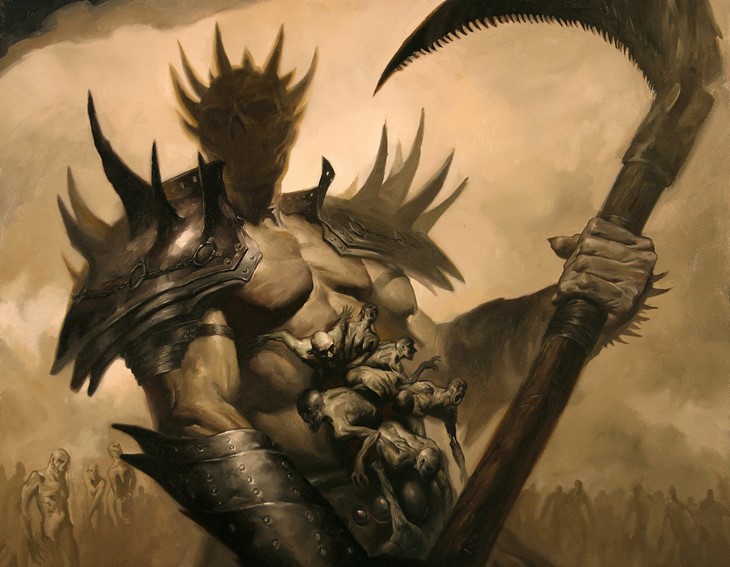
You've been working with Wizards of the Coast for eight years now. Tell us a little about how you got started.
The first time I approached Wizards of the Coast, I pitched my portfolio to one of the art directors and was given some valuable feedback that I took home and worked on. About a year or so later (2010), I ran into the same director at IlluXCon, where I had a booth. He saw the work I was doing then, and I got my first commission from him. I've been on just about every set since.
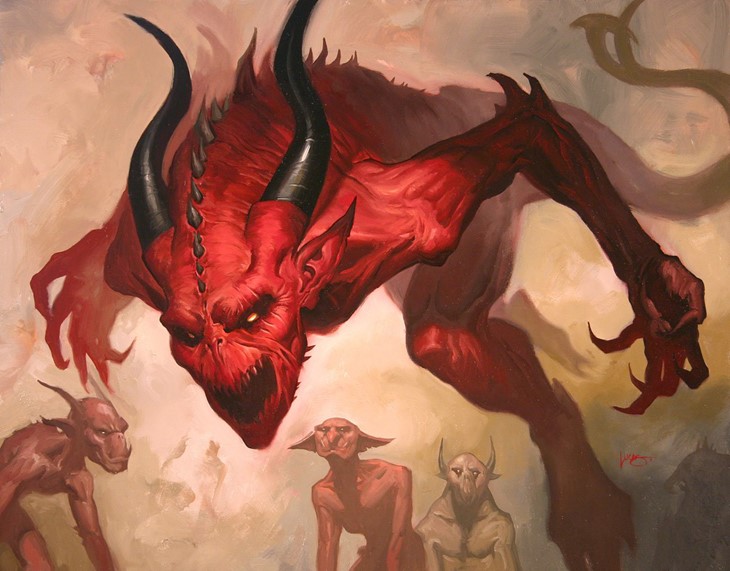
Can you give us a brief description of your painting process for Magic cards?
Once I receive the art brief, I gather some reference to help spring board my digital, rough sketch. I then submit a sketch or two. Once one is picked by the AD, I start work on a tighter drawing. I then transfer that onto a painting surface and get to painting. I usually cover the painting with a thin layer of the values and colors I'm intending to paint, more opaque, later. From here, I pick a spot, and start to render.
In which way does the small card format condition the creative process?
It's definitely smart to plan for the image to be downsized. The image needs to be instantly recognizable at that scale. You need to have a clear separation between your foreground, middle ground, and background elements. This gives a good sense of depth and an easier read on the illustration at card size.
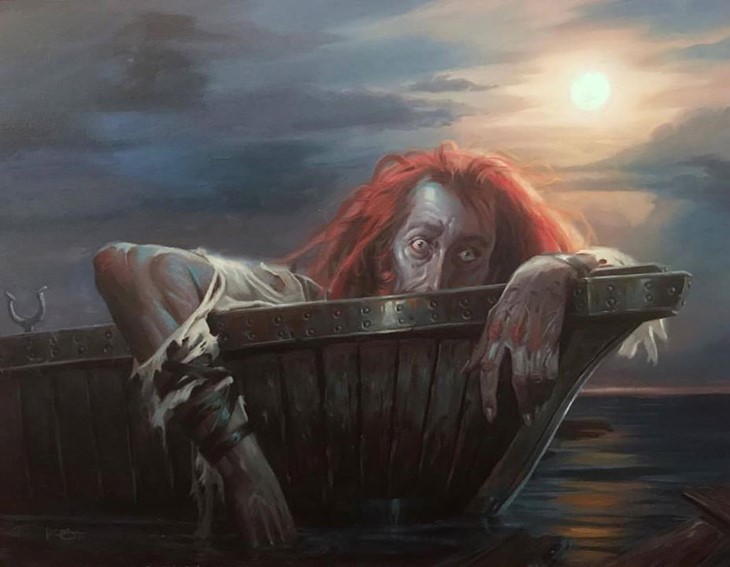
Art descriptions give artists a rundown of the card, they must work from there to create an image. What were some of the most challenging cards you painted, and why?
Primal Clay! Man, that was a tough one. Mainly because the description of the object was so abstract and there wasn't a clear, definitive design for the object. I had a tough time realizing how it would look.
On the other hand, were there some of the art descriptions that "immediately clicked"?
Which ones? I got the chance to illustrate Duress in the Ixalan set. For some reason, after I read the assignment, I knew exactly how I wanted to illustrate it. I can't explain why, but that was what immediately came into my head. I had to struggle to find a second idea, because I felt the first one was perfect. I'm just happy that the AD let me go with that one.
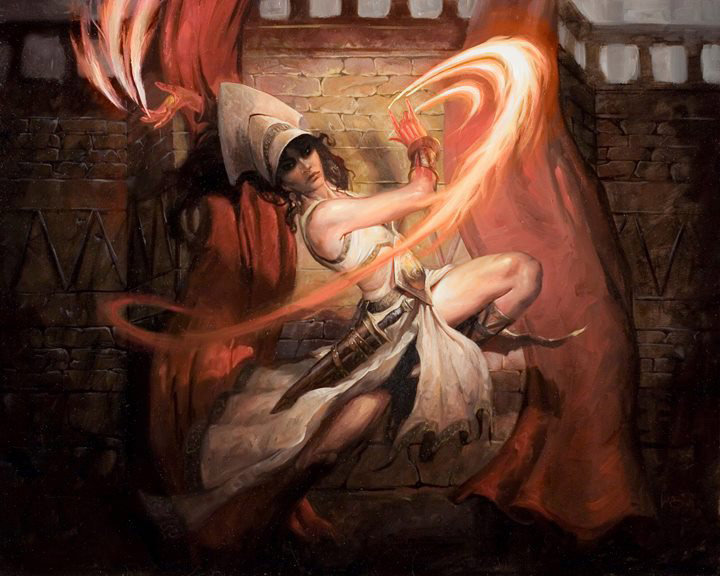
You painted new art for the iconic Thoughtseize and Grave Titan. When creating new art for an existing card, do you feel more pressured? How does this process differ from creating art for a new card?
To be honest, when I did Thoughtseize and GT, I was a newer MTG artist. I had no idea what either of those cards really were. In fact, as I was painting Thoughtseize, I felt that it was too "weird" to appeal to any collectors. Little did I know. I must have gotten a dozen emails, when the image was released, asking about the original painting.
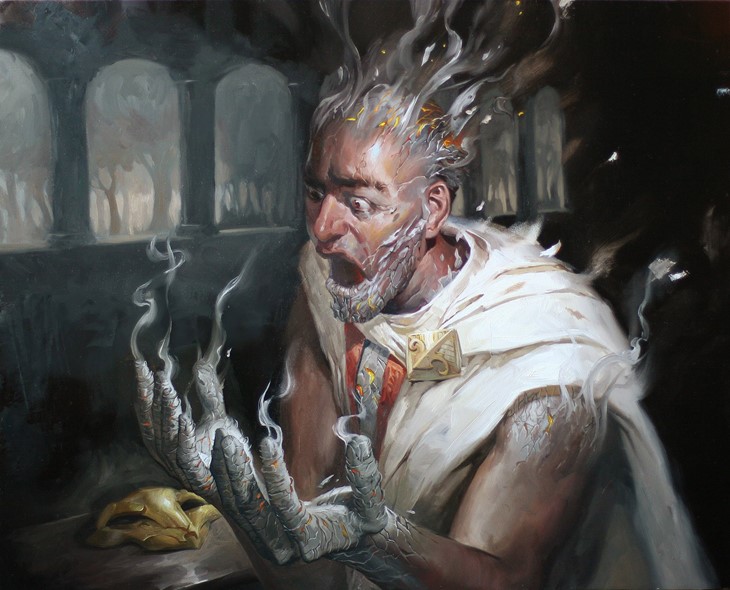
For our last question, of all the cards you've made, which one is your favorite and why?
Haha, I get asked this question a lot. I like each one for different reasons. Some I like for a particular way I rendered something, others for the way the image was composed, or maybe overcoming a particular difficult thing to illustrate. So, I can't really pick just one.
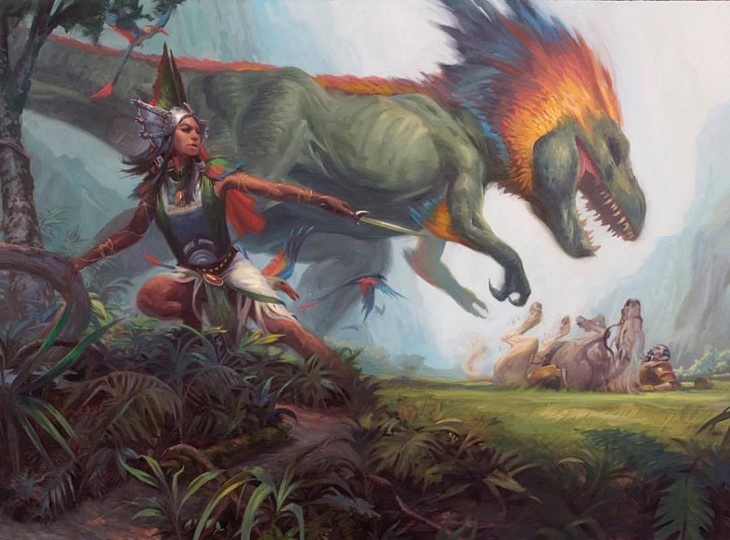
We want to thank Lucas for the interview. You can read more about his work on his website
